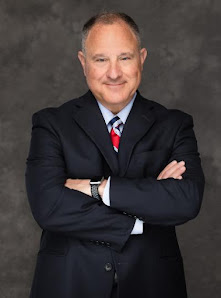Luigi Mangione's lawyers contend that Attorney General Pam Bondi's decision to seek the death penalty against him in the killing of UnitedHealthcare CEO Brian Thompson was tainted by her prior work as a lobbyist at a firm that represented the insurer's parent company, reported The Associated Press.
Bondi was
a partner at Ballard Partners before leading the Justice Department's charge to
turn Mangione's federal prosecution into a capital case, creating a
"profound conflict of interest" that violated his due process rights,
his lawyers wrote in a court filing late Friday. They want prosecutors barred
from seeking the death penalty and some charges thrown out. A hearing is
scheduled for Jan. 9.
By
involving herself in the death penalty decision and making public statements
suggesting that Mangione deserves execution, Bondi broke a vow she made before
taking office in February that she would follow ethical regulations and bow out
of matters pertaining to Ballard clients for a year, Mangione's lawyers said.
They
argued Bondi has continued to profit from her work for Ballard — and,
indirectly, from its work for UnitedHealth Group — through a profit-sharing
arrangement with the lobbying firm and a defined contribution plan it
administers.
The
"very person" empowered to seek Mangione's death "has a
financial stake in the case she is prosecuting," his lawyers wrote. Her
conflict of interest "should have caused her to recuse herself from making
any decisions on this case," they added.
Messages
seeking comment were left for the Justice Department and Ballard Partners.
Bondi
announced in April that she was directing Manhattan federal prosecutors to seek
the death penalty, declaring even before Mangione was formally indicted that
capital punishment was warranted for a "premeditated, cold-blooded
assassination that shocked America."
Thompson,
50, was killed Dec. 4, 2024, as he walked to a Manhattan hotel for UnitedHealth
Group's annual investor conference. Surveillance video showed a masked gunman
shooting him from behind. Police say "delay," "deny" and
"depose" were written on the ammunition, mimicking a phrase used to
describe how insurers avoid paying claims.
Mangione,
27, the Ivy League-educated scion of a wealthy Maryland family, was arrested
five days later at a McDonald's in Altoona, Pennsylvania, about 230 miles
(about 370 kilometers) west of Manhattan. He has pleaded not guilty to federal
and state murder charges. The state charges carry the possibility of life in
prison. Neither trial has been scheduled.
Friday's
filing put the focus back on Mangione's federal case a day after a marathon
pretrial hearing ended in his fight to bar prosecutors in his state case from
using certain evidence found during his arrest, such as a gun that police said
matched the one used to kill Thompson and a notebook in which he purportedly
described his intent to "wack" a health insurance executive. A ruling
isn't expected until May.
Mangione's
defense team, led by the husband-and-wife duo of Karen Friedman-Agnifilo and
Marc Agnifilo, zeroed in on Bondi's past lobbying work as they seek to convince
U.S. District Judge Margaret Garnett to rule out capital punishment, throw out
some charges and exclude the same evidence they want suppressed from the state
case.
In a
September court filing, Mangione's lawyers argued that Bondi's announcement
that she was ordering prosecutors to seek the death penalty — which she
followed with Instagram posts and a TV appearance — showed the decision was
"based on politics, not merit." They also said her remarks tainted
the grand jury process that resulted in his indictment a few weeks later.
Bondi's
statements and other official actions — including a highly choreographed perp
walk that saw Mangione led up a Manhattan pier by armed officers, and the Trump
administration's flouting of established death penalty procedures — "have
violated Mr. Mangione's constitutional and statutory rights and have fatally
prejudiced this death penalty case," his lawyers said.
In a court
filing last month, federal prosecutors argued that "pretrial publicity,
even when intense, is not itself a constitutional defect."
Rather
than dismissing the case outright or barring the government from seeking the
death penalty, prosecutors argued, the defense's concerns can best be
alleviated by carefully questioning prospective jurors about their knowledge of
the case and ensuring Mangione's rights are respected at trial.
"What
the defendant recasts as a constitutional crisis is merely a repackaging of
arguments" rejected in previous cases, prosecutors said. "None
warrants dismissal of the indictment or categorical preclusion of a
congressionally authorized punishment."
Mangione's
lawyers said they want to investigate Bondi's ties to Ballard and the firm's
relationship with UnitedHealth Group and will ask for various materials,
including details of Bondi's compensation from the firm, any direction she's
given Justice Department employees regarding the case or UnitedHealthcare, and
sworn testimony from "all individuals with personal knowledge of the
relevant matters."
To visit The AP CLICK HERE







